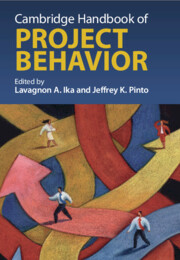Refine search
Actions for selected content:
3372742 results
2 - Different Conceptual Frameworks of Catatonia
-
- Book:
- Catatonia
- Published online:
- 26 July 2025
- Print publication:
- 14 August 2025, pp 21-29
-
- Chapter
- Export citation
Contents
-
- Book:
- Time and Governance in Fifteenth-Century Perpignan
- Published online:
- 26 July 2025
- Print publication:
- 14 August 2025, pp vii-vii
-
- Chapter
- Export citation
Bibliography
-
- Book:
- Attention to Virtues
- Published online:
- 25 July 2025
- Print publication:
- 14 August 2025, pp 319-326
-
- Chapter
- Export citation
2 - The Long Road Back
-
- Book:
- Redemption
- Published online:
- 14 August 2025
- Print publication:
- 14 August 2025, pp 51-103
-
- Chapter
- Export citation
Chapter 6 - The past in the present: Bringing Foundation to Year 2 History and Civics and Citizenship education to life
- from Part II - HASS concepts and sub-strands
-
-
- Book:
- Making Humanities and Social Sciences Come Alive
- Published online:
- 02 August 2025
- Print publication:
- 14 August 2025, pp 101-117
-
- Chapter
- Export citation
Contents
-
- Book:
- Statistical Mechanics for Physicists and Mathematicians
- Published online:
- 28 July 2025
- Print publication:
- 14 August 2025, pp v-viii
-
- Chapter
- Export citation
12 - Rap to Skool
- from Part III - Applications of Rap
-
-
- Book:
- The Cambridge Companion to Global Rap
- Published online:
- 25 July 2025
- Print publication:
- 14 August 2025, pp 181-194
-
- Chapter
- Export citation
Frontmatter
-
- Book:
- The UKMLA Applied Knowledge Test
- Published online:
- 22 August 2025
- Print publication:
- 14 August 2025, pp i-iv
-
- Chapter
- Export citation
22 - The United States from Independence to the war with Mexico, 1776–1848
-
-
- Book:
- The Cambridge History of War
- Published online:
- 18 July 2025
- Print publication:
- 14 August 2025, pp 530-551
-
- Chapter
- Export citation
Preface
-
- Book:
- Punctuated Equilibria and Sino-American Relations
- Published online:
- 25 July 2025
- Print publication:
- 14 August 2025, pp vii-xii
-
- Chapter
- Export citation
Chapter 3 - The Metaphors We Read With
-
- Book:
- How the World Became a Book in Shakespeare's England
- Published online:
- 09 August 2025
- Print publication:
- 14 August 2025, pp 73-119
-
- Chapter
- Export citation
Appendix: - The Cases and Investigations of the KCIR
-
- Book:
- The Kansas Court of Industrial Relations
- Published online:
- 26 July 2025
- Print publication:
- 14 August 2025, pp 237-242
-
- Chapter
- Export citation
Chapter 3 - Production and Prosperity
-
- Book:
- Time and Governance in Fifteenth-Century Perpignan
- Published online:
- 26 July 2025
- Print publication:
- 14 August 2025, pp 94-130
-
- Chapter
- Export citation
13. - Ophthalmology
- from QUESTIONS
-
- Book:
- The UKMLA Applied Knowledge Test
- Published online:
- 22 August 2025
- Print publication:
- 14 August 2025, pp 167-177
-
- Chapter
- Export citation
15 - Warfare in early modern Africa, c. 1450–c. 1850
-
-
- Book:
- The Cambridge History of War
- Published online:
- 18 July 2025
- Print publication:
- 14 August 2025, pp 387-408
-
- Chapter
- Export citation
8 - Lords of the Mic
- from Part III - Applications of Rap
-
-
- Book:
- The Cambridge Companion to Global Rap
- Published online:
- 25 July 2025
- Print publication:
- 14 August 2025, pp 127-143
-
- Chapter
- Export citation
Appendices
-
- Book:
- Appearance, Disability and the Law
- Published online:
- 31 July 2025
- Print publication:
- 14 August 2025, pp 184-195
-
- Chapter
- Export citation
Selected Bibliography
-
- Book:
- The Cambridge Companion to Global Rap
- Published online:
- 25 July 2025
- Print publication:
- 14 August 2025, pp 273-281
-
- Chapter
- Export citation
Chapter 20 - Values and social justice education
- from Part V - HASS for all learners
-
-
- Book:
- Making Humanities and Social Sciences Come Alive
- Published online:
- 02 August 2025
- Print publication:
- 14 August 2025, pp 340-354
-
- Chapter
- Export citation

Cambridge Handbook of Project Behavior
- Coming soon
-
- Expected online publication date:
- August 2025
- Print publication:
- 28 August 2025
-
- Book
- Export citation
